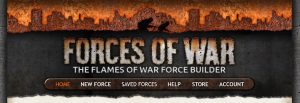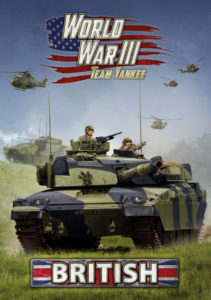
It has been great fun to share this new book with you and hopefully you have picked up some great ideas on how you can build a new Waffen-SS army.
And stay tuned… next up, Bagration: Soviets! The mean green machine is coming…
The Battlefront Team
Join the Battlefront team as we launch Bagration: Soviet

It has been great fun to share this new book with you and hopefully you have picked up some great ideas on how you can build a new Waffen-SS army.
And stay tuned… next up, Bagration: Soviets! The mean green machine is coming…
The Battlefront Team
D-Day: Waffen-SS is live on Forces, and on the Digital app so you can start putting together a force to repel the Allies and secure Fortress Europe!

Spotlights
Working With Thermoplastic
Bocage Country Mission Terrain Pack
D-Day: British Rotations
D-Day: British Spotlight
Forces and List Building
Back In Time for Tea and Medals
We’re Paratroopers- We’re Meant to Be Surrounded
The Fox’s Mask
Churchills On The Horizon
Slow and Steady – A New D-Day: British Force
Updating My Desert Rats in Normandy
Modelling and Painting
Pete the Wargamer Paints D-Day: British
Building an SBG Bridging Churchill
Radhošť
Thermoplastic 101
That’s a wrap on the D-Day: British launch! Thanks for joining us, and we look forward to seeing all your D-Day: British projects!
With the release of D-Day: British comes the first of our Thermoplastic figures, the British Airborne.
Since Thermoplastic is a relatively new technology, and as working with it is slightly different to any of our other plastic figures, it’s worth taking you through a few primers on how Thermoplastic behaves and how you can get the most out of our new figures.
The process through which the new figures are cast is similar to other casting methods for the plastics we offer- injection moulding of heated plastic. The point of difference with the new Thermoplastic technology is that the figures are cast in flexible moulds. The flexible moulds allow for undercuts, which means more detail on the figures can be cast, and that detail is much truer to the original design. Flexible moulds also allow us to broaden the number of poses we can deliver with the range of figures, meaning our infantry forces are about to get more dynamic than ever before.
None of these technical details are truly that relevant to us as modellers, but it is important to know that this casting method holds the fine detail we’ve all come to expect from Battlefront figures
Thermoplastic is a lightweight plastic with a medium amount of flex. Thermoplastic figures come on a sprue similar to the flexible plastic infantry, with eight or so figures on a single strip of Thermoplastic. Before you get started on your infantry, there are a few key differences between Thermoplastic figures and other infantry materials
Prep
As is the case with all miniature casting processes, Thermoplastic casting can occasionally leave a little flash or sometimes lines where the two halves of the mould join together. To clean these up you need to run a sharp hobby blade along the mould lines to slice them off flush with the actual figure. Filing or scraping the figure isn’t recommended and will leave a feathery residue behind. The Thermoplastic material can be cut or drilled out the same as any other infantry figure, so if you want to do head swaps or any other conversions, you will be able to as usual.
Gluing
Thermoplastic isn’t quite the same plastic as the stuff our hard plastic figures or vehicle kits are made of, and as such won’t weld with plastic cement. We recommend you use superglue to fix figures to their bases. You will also need to use super glue if you are doing any sorts of conversions on the figures themselves.
Painting
As always, it’s recommended to prime your figures before you paint them. Just like the flexible plastic figures, no paint will flake off the miniature with regular day-to-day flexing, however that doesn’t mean you shouldn’t prime the figures anyway to ensure paint adhesion. In any case, painting the new Thermoplastic figures offers no new difficulties or differences from your regular painting routine.
We are excited to get the first of our new figures out and in your hands for D-Day: British, and we are really looking forward to getting the most out of this new material as we refine and improve the process.
D-Day: German is live on Forces, so you can start putting together a force to repel the Allies and secure Fortress Europe!
D-Day: German is live on Digital- check out everything you need to know about Digital right here…
On March 14, be sure to tune in to our D-Day: British Live Launch. We’ll have a whole collection of articles relating to our latest Late War release, bringing you all you need to build your British or Commonwealth D-Day Force!

New Units and Spotlights
WWIII: British Spotlight
Fox Armoured Car
Academy Aeroplanes
The Marksman
Forces and List-Building
Time to Get a Chally or Three
Battle Taxis and Battle Buses
Victor’s Scorpions
Know Your Foe
Modelling and Painting
Aaron’s Oil War British Part I
Aaron’s Oil War British Part II
Aaron’s Oil War British Part III
Pete the Wargamer Paints British Armour
Pete the Wargamer Paints British Desert Armour
Aaron’s Dolled-Up Chieftain
Tactics and Gaming
The Defence of Shellerton
Artillery in V2
Chris Visits Goblin TV
Chris Visits OnTableTop
Thanks for joining us for the launch of WWIII: British! We’ve had a great time putting it together, and you’ll have a great time fielding these high-tech war machines!